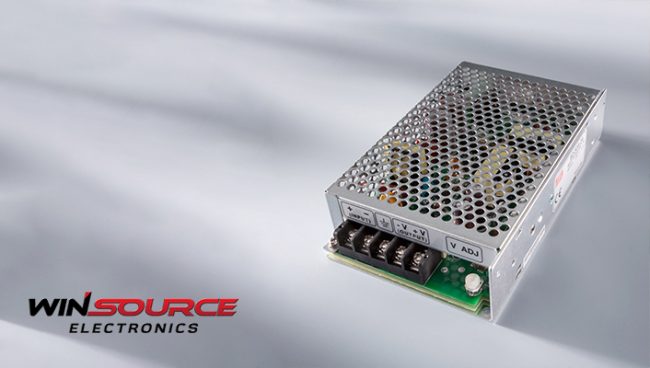
In the ever-developing world of technology, staying ahead often involves understanding the tools that drive innovation.
One such tool is the 5.0 to 25 converter.
In another of our regular blog articles, our technology experts here at WIN SOURCE will explore this converter’s intricacies and potential applications.
Let’s begin with the mini answer before looking into more details.
A 5.0 to 25 Converter is a versatile tool that facilitates seamless data transformation between different scales. It adapts numerical values, enhancing compatibility in applications like engineering, software development, and hardware connectivity. This ensures precise communication and efficient integration across diverse systems.
Let’s head straight in and learn more about this precision electronic device.
The 5.0 to 25 Converter
The 5.0 to 25 Converter is pivotal in bridging the gap between disparate numerical scales.
It is a mediator, allowing for smooth data exchange in various industries with different measurement standards.
This adaptability makes it valuable, particularly when precision and consistency are paramount.
The converter is instrumental in numerical scaling in engineering, ensuring that measurements conform to specific standards.
Whether it’s voltage requirements in hardware systems or data representation in software interfaces, this tool facilitates seamless communication, prevents errors, and enhances overall efficiency.
Customization
The 5.0 to 25 Converter is not confined to a rigid set of applications; its versatility shines in its ability to be customized.
Engineers and developers can tailor its functionality to meet specific requirements, making it an agile solution capable of addressing the unique scaling needs of different projects.
Understanding the 5.0 to 25 Converter
Now, let’s find out more about this ultra-fast electronic device.
- Applications in Numerical Scaling: One primary application of the 5.0 to 25 converter lies in numerical scaling. It allows values to be converted from a 5.0 scale to a 25 scale and vice versa. This capability is precious in fields such as engineering, where different systems may use distinct scales for measurement.
- Integration in Software Interfaces: Compatibility is key in software development. The 5.0 to 25 converter is essential in bridging the gap between software interfaces that operate on different numerical scales. This enhances interoperability, fostering smoother communication between diverse software applications.
- Enhancing Hardware Connectivity: For hardware systems that rely on specific input ranges, the 5.0 to 25 converter acts as an intermediary, allowing disparate components to communicate effectively. This is especially valuable when hardware devices with varying voltage requirements must work together seamlessly.
- Precision in Data Processing: Precision is crucial in data processing, and the 5.0 to 25 converter contributes to maintaining accuracy. Ensuring data is appropriately scaled helps prevent errors and inconsistencies when dealing with different measurement standards.
Customization for Specific Requirements
As we discovered earlier, one of the strengths of the 5.0 to 25 converter is its adaptability to meet specific requirements.
Engineers and developers can often customize the converter to handle unique scaling needs, making it a versatile solution for many applications.
This flexibility adds a layer of tailoring that is essential in industries where precision and customization are paramount.
Data Interpolation and Extrapolation
Beyond basic scaling, the 5.0 to 25 converter excels in data interpolation and extrapolation.
This means it can intelligently estimate values within a given range or extend predictions beyond the existing data points.
This capability is particularly useful in scenarios where predicting outcomes or filling in missing data is essential for informed decision-making.
Cross-Platform Compatibility
In an era where cross-platform compatibility is a constant challenge, the 5.0 to 25 converter stands out as a unifying element.
Its ability to seamlessly convert data between different platforms and systems promotes collaboration and ensures that information flows seamlessly, regardless of the underlying technologies.
Future Prospects and Evolving Technologies
As technology continues to evolve, so too will the role of the 5.0 to 25 converter.
Anticipating future trends and advancements in related fields, such as artificial intelligence and the Internet of Things, will illuminate how this converter may play an even more integral role in shaping the technological landscape of tomorrow.
So don’t forget to explore our store for all your development projects. We serve both home hobbyists and professionals.
Discover top-quality components from leading manufacturers, all offered at highly competitive prices.
Whether you’re an engineer working on intricate projects or a hobbyist exploring new realms, our store provides the tools you need for success.
5.0 to 25 Converter: A Comprehensive Guide – To End With…
As we’ve discovered, the 5.0 to 25 converter is more than a simple numerical tool; it’s a catalyst for efficiency, precision, and compatibility across various domains.
Its ability to adapt to specific needs, handle complex data scenarios, and foster collaboration positions it as a key player in modern technology’s ever-expanding toolkit.
Embracing and understanding the nuances of the 5.0 to 25 converter is not just about staying current but actively participating in technological progress’s transformative journey.
© 2024 Win Source Electronics. All rights reserved. This content is protected by copyright and may not be reproduced, distributed, transmitted, cached or otherwise used, except with the prior written permission of Win Source Electronics.

COMMENTS